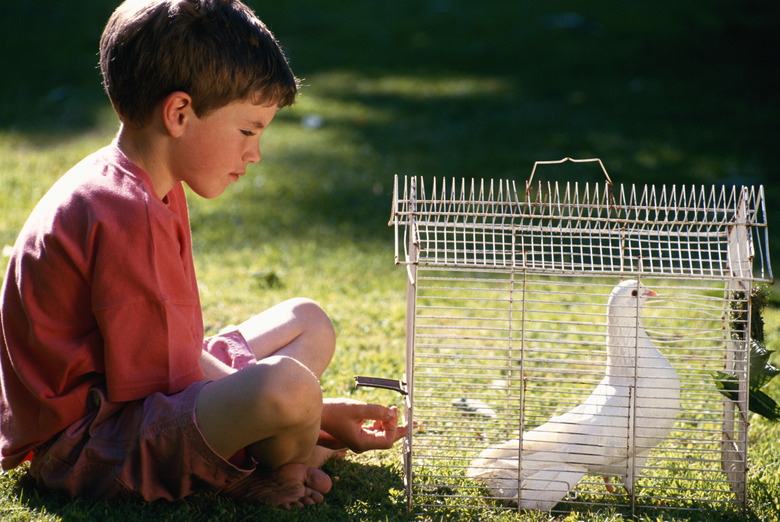Facts On The Adaptation Of Doves For Kids
Most children are fascinated by birds, and one species they might be most familiar with is the dove. The mourning dove is found in all states except for Alaska and Hawaii. Doves and pigeons both belong to the Columbidae family, and the terms are often used interchangeably. Use these familiar birds to teach your students about structural and behavioral adaptations in animals.
Food and Drink
Doves adapt to fit their habitats, and that includes how they eat and drink. The white-winged dove is found throughout the southern part of the United States, but most live primarily in the hot, desert Southwest. White-winged doves have adapted to their hot summer homes by developing the ability to fly up to 25 miles if needed to find water, which is often scarce in the desert. If the doves still can't find a good source of water, they use their beaks to drink nectar from the fruit of the saguaro cactus. The mourning dove has developed the ability to drink only once per day, which allows it to thrive almost anywhere and has contributed to its huge populations and range. Rock doves — which are also called urban or domestic pigeons — have adapted so well to life in big cities that they often depend on handouts for food.
Habitats and Nesting
Humans often develop land that once belonged to birds and animals. Some doves have adapted to the loss of their habitats by learning how to live in new places. White-winged doves prefer to nest in desert brush, but sometimes brush is hard to find due to people cutting it down. So, the doves have adapted and learned to nest in citrus trees instead, and their population has grown dramatically. Inca doves also have adapted to urban living and often choose to live near people. Rock doves have adapted to city life so well that they often nest on buildings, sometimes blocking vents.
Migration and Flight
Doves that live in the southern parts of the United States do not usually migrate. Some that live in colder states do migrate south two times a year. But others have adapted to cold temperatures and stay put during the winter months. Rock doves are one type of dove that does not migrate. One way they adapt to winter conditions is to survive on city trash rather than seeds. They also huddle in groups to keep warm. Although they don't migrate, rock doves can find their way back to their nests, however, even if they are removed for long distances. Scientists believe that they adapted this ability to find their own nests due to the large populations of doves that build similar-looking nests.
Mating and Reproduction
Doves tend to build flimsy nests. Ground doves build nests on the ground, which are often disturbed by humans. Most other doves build their nests in shrubs or higher up in trees, but their nests aren't necessarily any safer. Dove nests are notoriously shabby, and eggs or young birds can fall out. To make up for this, doves have adapted to nest and produce eggs more frequently than other birds, raising two or three broods per nesting season. They will also often re-nest immediately if they lose their young.
Cite This Article
MLA
Sanders, April. "Facts On The Adaptation Of Doves For Kids" sciencing.com, https://www.sciencing.com/adaptation-doves-kids-8611524/. 24 April 2017.
APA
Sanders, April. (2017, April 24). Facts On The Adaptation Of Doves For Kids. sciencing.com. Retrieved from https://www.sciencing.com/adaptation-doves-kids-8611524/
Chicago
Sanders, April. Facts On The Adaptation Of Doves For Kids last modified March 24, 2022. https://www.sciencing.com/adaptation-doves-kids-8611524/
